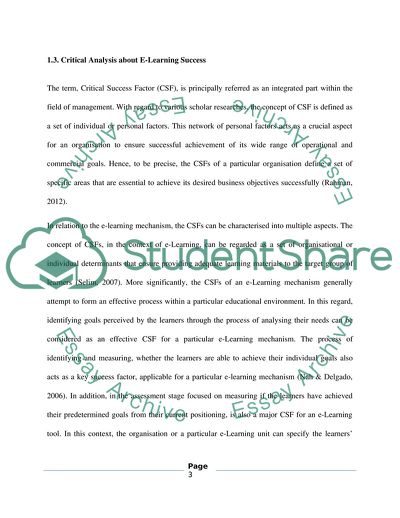Cite this document
(Critical Analysis about E-Learning Success Coursework Example | Topics and Well Written Essays - 3000 words, n.d.)
Critical Analysis about E-Learning Success Coursework Example | Topics and Well Written Essays - 3000 words. https://studentshare.org/information-technology/1832246-e-learning
Critical Analysis about E-Learning Success Coursework Example | Topics and Well Written Essays - 3000 words. https://studentshare.org/information-technology/1832246-e-learning
(Critical Analysis about E-Learning Success Coursework Example | Topics and Well Written Essays - 3000 Words)
Critical Analysis about E-Learning Success Coursework Example | Topics and Well Written Essays - 3000 Words. https://studentshare.org/information-technology/1832246-e-learning.
Critical Analysis about E-Learning Success Coursework Example | Topics and Well Written Essays - 3000 Words. https://studentshare.org/information-technology/1832246-e-learning.
“Critical Analysis about E-Learning Success Coursework Example | Topics and Well Written Essays - 3000 Words”. https://studentshare.org/information-technology/1832246-e-learning.


